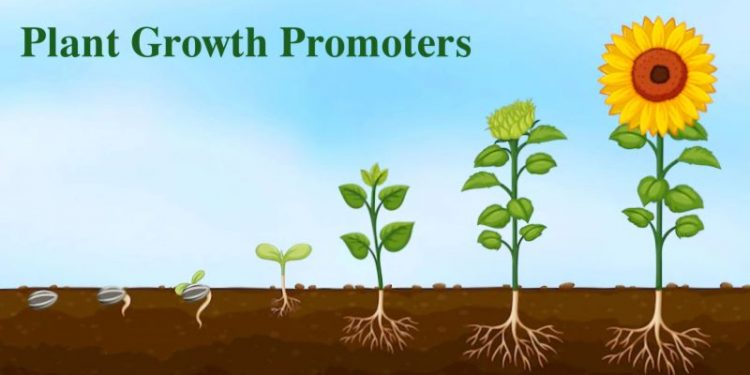Understanding the Types, Functions, and Benefits of Plant Growth Promoters in Modern Agriculture
Plant Growth Promoters (PGPs) play a crucial role in enhancing plant growth and agricultural productivity. These substances, which can be either natural or synthetic, help crops achieve better yields and quality, making them increasingly popular as farmers seek sustainable and efficient methods to boost their output.
Types of Plant Growth Promoters
- Auxins
Auxins are natural hormones responsible for various growth processes in plants, including cell elongation, root formation, and bud development. They also influence phototropism, the plant’s response to light. Synthetic auxins are commonly used to promote rooting in cuttings and control fruit drop.- Examples:
- Natural Auxin: Indole-3-acetic acid (IAA)
- Synthetic Auxins: Indole-3-butyric acid (IBA), 1-Naphthaleneacetic acid (NAA)
- Applications: Rooting hormone for cuttings, fruit thinning.
- Examples:
- Gibberellins
Gibberellins are vital for stem elongation, seed germination, and flowering. They help break seed dormancy, ensuring uniform germination. In fruit production, gibberellins are used to increase fruit size and improve quality, particularly in crops like grapes and apples.- Example:
- Gibberellic acid (GA3)
- Applications: Increasing fruit size in grapes, inducing seed germination, promoting flowering in crops such as sugarcane and rice.
- Example:
- Cytokinins
Cytokinins promote cell division and delay leaf aging, which helps plants maintain their vigor. They are used to enhance tissue growth and increase yield, especially in grains and leafy vegetables. Cytokinins also aid in nutrient distribution within plants.- Examples:
- Natural Cytokinin: Zeatin
- Synthetic Cytokinin: Kinetin
- Applications: Delaying leaf aging in vegetables, enhancing tissue culture growth.
- Examples:
- Brassinosteroids
Brassinosteroids are natural growth promoters that boost plant resistance to various stresses, including extreme temperatures, pathogens, and heavy metals. They enhance seed germination, root growth, and flower development, contributing to increased crop yields and improved stress tolerance.- Example:
- Brassinolide
- Applications: Improving stress tolerance and growth in crops like rice, wheat, and tomatoes.
- Example:
Functions of Plant Growth Promoters
- Root Development: PGPs stimulate root growth, enabling plants to access water and nutrients more efficiently.
- Flowering and Fruiting: They regulate the development of flowers and fruits, improving yield and fruit quality.
- Stress Tolerance: PGPs enhance plants’ ability to withstand harsh environmental conditions such as drought, salinity, and extreme temperatures.
- Seed Germination: Many PGPs help break seed dormancy and ensure uniform germination, which is essential for successful crop establishment.
In summary, plant growth promoters are integral to modern agriculture, offering various benefits from improved growth and yield to enhanced stress tolerance. As agricultural practices continue to evolve, the application of these promoters will play a significant role in achieving sustainable and productive farming.
Error




